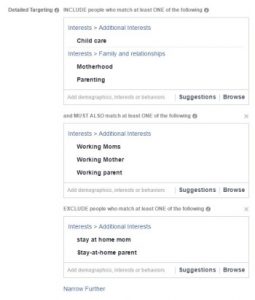Direct store delivery offers some significant advantages to manufacturers and distributors that want better access to their end customers, including the ability to move products through the supply chain more quickly. Although direct store delivery is often associated with the grocery industry, higher supply chain velocity—being able to put their products into consumers’ hands more quickly and with less handling—is a major strategic advantage for many consumer goods companies, not just those in food and beverage.
6 Signs Direct Store Delivery Might Be Right for Your Business
Centralized Distribution or Direct Store Delivery?
Centralized distribution models—the hub and spoke distribution model that typifies most supply chains—are often the most efficient way to move goods from manufacturers to distributors and on to the customer. Under this model, manufacturers ship products to distributors who aggregate multiple products from multiple manufacturers, and send these out in large shipments of multiple items to retail stores that then sell them to consumers.
This centralized model is a great fit for “standard” items, such as items easily shipped via carrier, items with long shelf lives, or those that don’t require special handling. But not every item is a good fit for centralized distribution networks. Some items may turn over too quickly. Others are too easily damaged or too large to be shipped by LTL or FTL carriers. In these cases, the direct store delivery model may make more sense.
When is direct store delivery the right fit for your business? It typically depends on the volume of sales for the products you sell, how easy it is to ship the products, and other factors. Your business may benefit from using the direct store delivery model if the products you sell fit one or more of these descriptions:
- High volume products with short shelf life or critical freshness requirements: These requirements are common drivers of the direct store delivery model in the grocery and food distribution industries. Bread, dairy, eggs and similar products fit into this category. They are high volume items (i.e., grocery stores sell a lot of them) and they can spoil quickly. They are shipped directly to stores to reduce the amount of time the products spend in the supply chain, and because they sell out quickly, stock needs to be replenished frequently. Other items with short shelf lives due to high demand/volume of sales, rather than freshness concerns, may also fall into this category—such as toiletries and cleaning products.
- Low density, easily damaged products: Items that are large, fragile, and lightweight may be a good fit for the direct store delivery model to prevent damage in transit. In grocery and food distribution, this might include items like bread or potato chips, but there can be applications for other types of consumer goods as well. Direct store delivery allows manufacturers to reduce shipping costs while maintaining control of handling to reduce breakage.
- High volume products with local manufacturing or distribution networks: Products that are produced or warehoused locally may be a good fit for direct store delivery if there is enough volume being sold in retail establishments to justify the expense of shipping directly to stores. For instance, a high volume coffee roaster might ship directly to its wholesale customers from its own distribution centers, provided those customers are in close proximity. But in areas farther away, they may ship directly to stores from Starbucks’ distribution centers.
- High variety, low value products: If you’re a producer of numerous, low value items, your retail partners may prefer to allow you to manage their in-store inventory, delivering, merchandising, and promoting these items. For these types of items, variety is a differentiator for the consumer but because of the low value of the item it may not be cost efficient for the retailer to manage or merchandise the items.
- Products with specific handling requirements: For items that require special handling, direct store delivery allows manufacturers to retain control of the shipping to avoid damage in transit. Oddly shaped products that don’t easily fit into a shipping container or cube may be a better fit for direct store delivery rather than shipping via LTL or FTL shipment.
- Highly complex products that require training: If the products require a great deal of training to understand how to use them, the direct store delivery model may be a good fit since the delivery offers a training opportunity. Delivery drivers can give any required training at each retail store, making sure store employees are able to pass on their knowledge of the product.
Direct Store Delivery Benefits to Retailers
Whether direct store delivery is the right fit for your manufacturing or wholesale business isn’t just about the products. It’s also related to the needs of your retail partners. Direct store delivery offers significant benefits to retailers, one of the most important being the ability to reduce labor costs. In the grocery industry, direct store delivery accounts for as much as 25% of in store labor.
When delivery drivers manage the reordering and stocking of high turnover items, store personnel are free to focus on more volume driving activities and serving customers. Any retail establishment that has high turnover on low value items may benefit from allowing these items to be delivered, stocked, and managed by the manufacturer or distributor rather than retail employees. These items can be costly to manage, yet have low margins making it not cost effective to manage them with store personnel.
This arrangement benefits suppliers as well. For retail managers, being able to rely on a direct store delivery driver to manage high volume, low value items saves labor costs and also drives loyalty. This loyalty allows direct store delivery suppliers to charge a slightly higher margin, increasing profits at higher volumes.
Direct Store Delivery Provides Insight into Demand
Direct store delivery is a strategy that provides at-the-shelf insight into demand. It allows manufacturers to go beyond ensuring stocks are replenished, and actually shape that demand through the promotion and merchandising of their products. This helps to increase both the volume of items sold and the margins on those items. Demand sensing, on the other hand, makes sure those items are in stock in order to facilitate those higher volumes and margins.
Direct store delivery offers manufacturers an opportunity to take a more hands on approach to shaping and sensing demand, reducing out-of-stocks, improving the customer experience, and accelerating time to market for new products. It can deliver results that benefit manufacturers and suppliers, retailers, and customers alike.
Business & Finance Articles on Business 2 Community(67)







